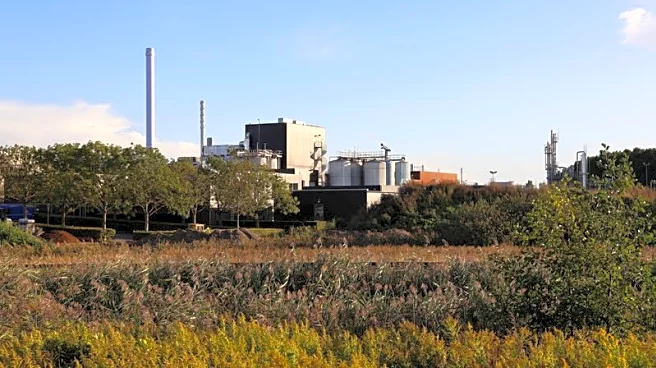What is the story about?
What's Happening?
STV, a prominent broadcaster in Scotland, has announced plans to cut 60 jobs and discontinue its north of Scotland television news program. This decision is part of a broader strategy to achieve £2.5 million in savings by next year, following a reported £200,000 loss in the first half of 2025. The company currently operates two distinct news services, one based in Glasgow for the central belt and another in Aberdeen for the north. The proposed changes would consolidate these into a single program from Glasgow, covering stories across Scotland. The move requires approval from the regulator Ofcom, which has received a request from STV regarding its news programming. The announcement comes amid declining advertising revenue, which fell to £45 million compared to £50 million in the same period last year. STV's chief executive, Rufus Radcliffe, emphasized the need to adapt to changing news consumption habits, as digital viewing increases and linear viewing declines.
Why It's Important?
The decision by STV to cut jobs and consolidate its news programming reflects broader challenges facing the television industry, particularly in adapting to shifts in audience behavior. As viewers increasingly turn to digital platforms for news, traditional broadcasters like STV face financial pressures and declining advertising revenues. The cuts have sparked concern among journalists and the National Union of Journalists (NUJ), which argues that the changes threaten the quality of local and national journalism. The move also marks the end of a legacy for Grampian Television, which historically provided local programming for the north of Scotland. The changes could impact how regional news is delivered and consumed, potentially reducing the diversity of news sources available to Scottish audiences.
What's Next?
STV's proposal to consolidate its news programming is subject to approval by Ofcom, which will carefully review the request. The broadcaster aims to protect its news service and adapt to changing consumption habits, but faces opposition from the NUJ, which plans to contest the cuts. The broader implications for the TV industry include potential shifts in programming strategies as broadcasters respond to economic pressures and changing viewer preferences. STV's plans for a new commercial radio station, STV Radio, indicate a strategic pivot towards diversifying its media offerings. The outcome of Ofcom's decision and the response from stakeholders will shape the future of regional news delivery in Scotland.
Beyond the Headlines
The changes at STV highlight the ongoing transformation in media consumption, with digital platforms increasingly dominating the landscape. This shift raises questions about the future of traditional broadcast journalism and its role in maintaining informed communities. The ethical implications of reducing local news coverage are significant, as it may affect public access to diverse perspectives and critical information. The consolidation of news services could lead to a homogenization of content, impacting the richness of regional storytelling. As media companies navigate these challenges, the balance between financial sustainability and journalistic integrity remains a critical concern.
AI Generated Content
Do you find this article useful?














